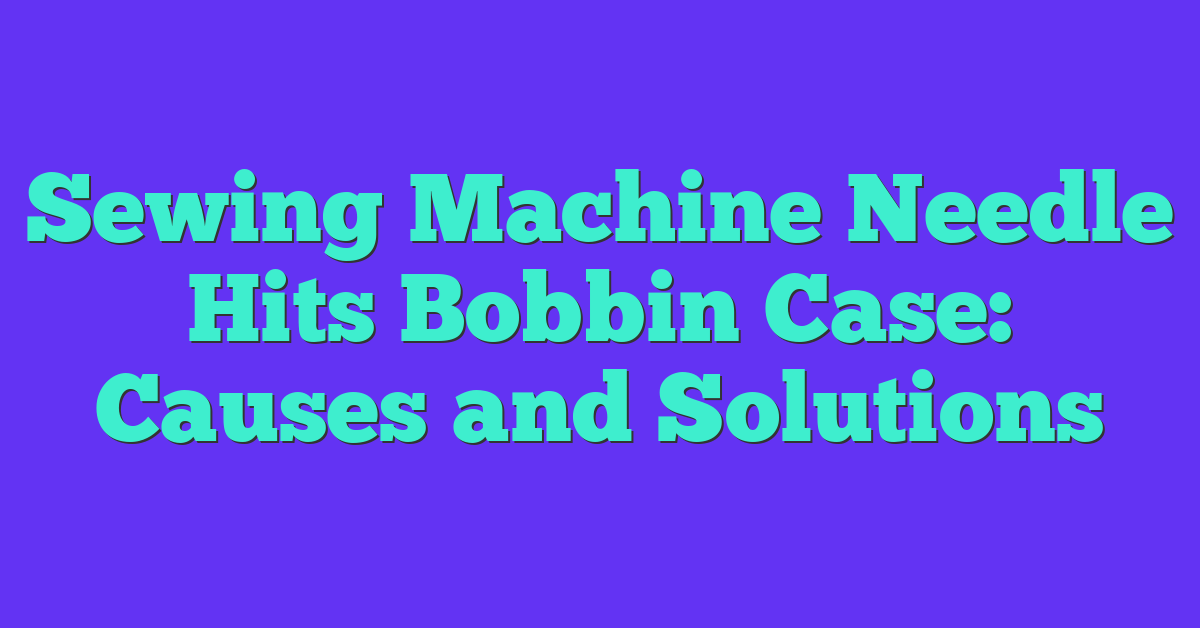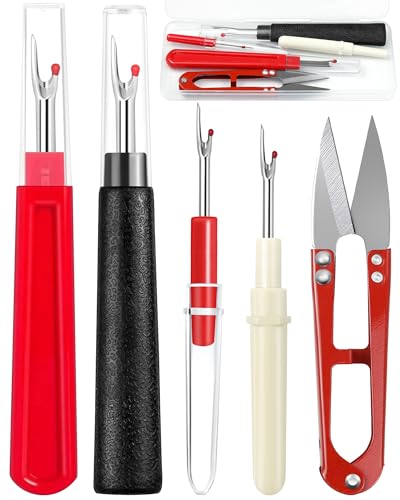As someone who loves to sew, I know how frustrating it can be when your sewing machine needle hits the bobbin case. This can cause your needle to break and your project to be ruined. But don’t worry, there are solutions to this problem. In this article, I will guide you through the steps to fix this issue and provide preventive measures to avoid it in the future.
Understanding your sewing machine is key to fixing this problem. The needle and bobbin work together to create a stitch, so any misalignment or damage to the needle or bobbin case can cause the needle to hit the bobbin case. Identifying the problem is the first step in troubleshooting the issue. There are several reasons why this might happen, such as a bent needle, incorrect needle size, or incorrect threading. Once you have identified the issue, you can take steps to fix it.
Repair and replacement may be necessary if the problem persists. If the needle is bent or damaged, replace it with a new one. If the bobbin case is damaged, it may need to be repaired or replaced. Preventive measures such as regular cleaning and maintenance of your sewing machine can also help avoid this issue in the future.
Key Takeaways
- Understanding your sewing machine is key to fixing the issue of the needle hitting the bobbin case.
- Identifying the problem and troubleshooting it is the first step to fixing the issue.
- Regular maintenance and preventive measures can help avoid this issue in the future.
Understanding Your Sewing Machine
As a beginner, it’s essential to understand the different parts of your sewing machine to use it effectively. In this section, I will explain the different parts of a sewing machine and their functions.
Recognizing Parts of Your Sewing Machine
Needle
The needle is a small, pointed metal rod that penetrates the fabric to create stitches. It moves up and down through the fabric and is held in place by the needle clamp.
Bobbin
The bobbin is a small spool of thread that is inserted into the bobbin case. The thread from the bobbin is pulled up by the needle to create stitches on the underside of the fabric.
Bobbin Case
The bobbin case is a small, cylindrical piece of metal that holds the bobbin in place while you are sewing. The bobbin case is inserted into the shuttle race, which is located under the needle plate.
Needle Plate
The needle plate is a metal plate that covers the bobbin case and shuttle race. It has a small hole that allows the needle to pass through and create stitches.
Presser Foot
The presser foot is a metal or plastic foot that holds the fabric in place while you are sewing. It applies pressure to the fabric, ensuring that it stays flat and does not move while you sew.
Needle Bar
The needle bar is a metal bar that holds the needle in place. It moves up and down, allowing the needle to penetrate the fabric and create stitches.
Hand Wheel
The hand wheel is a large wheel located on the side of the sewing machine. It is used to manually move the needle up and down.
Feed Dogs
The feed dogs are metal teeth located under the needle plate. They move the fabric through the machine, creating even stitches.
Types of Sewing Machines
There are different types of sewing machines available, including mechanical, computerized, and electric machines. Mechanical sewing machines are operated by a foot pedal and have a limited number of stitch options. Computerized sewing machines are controlled by a computer and can perform a variety of stitches and embroidery designs. Electric machines are powered by electricity and can be either mechanical or computerized.
Understanding the different parts of your sewing machine and the types of sewing machines available will help you choose the right machine for your needs.
Identifying the Problem
As a sewing enthusiast, I know how frustrating it can be when the needle hits the bobbin case. This issue can cause damage to the needle, stitch, and thread, and can affect the overall quality of your sewing project. In this section, I will discuss the signs that your needle is hitting the bobbin case and the possible causes for needle and bobbin case issues.
Signs Your Needle is Hitting the Bobbin Case
There are several signs that you can look for to determine if your needle is hitting the bobbin case. These signs include:
- A loud noise when you try to sew
- The needle will not move when you try to sew
- The thread will be wrapped around the needle or bobbin case
- The sewing machine needle will be bent or broken
If you notice any of these signs, it’s important to stop sewing immediately and investigate the issue further.
Possible Causes for Needle and Bobbin Case Issues
There are several possible causes for needle and bobbin case issues. These include:
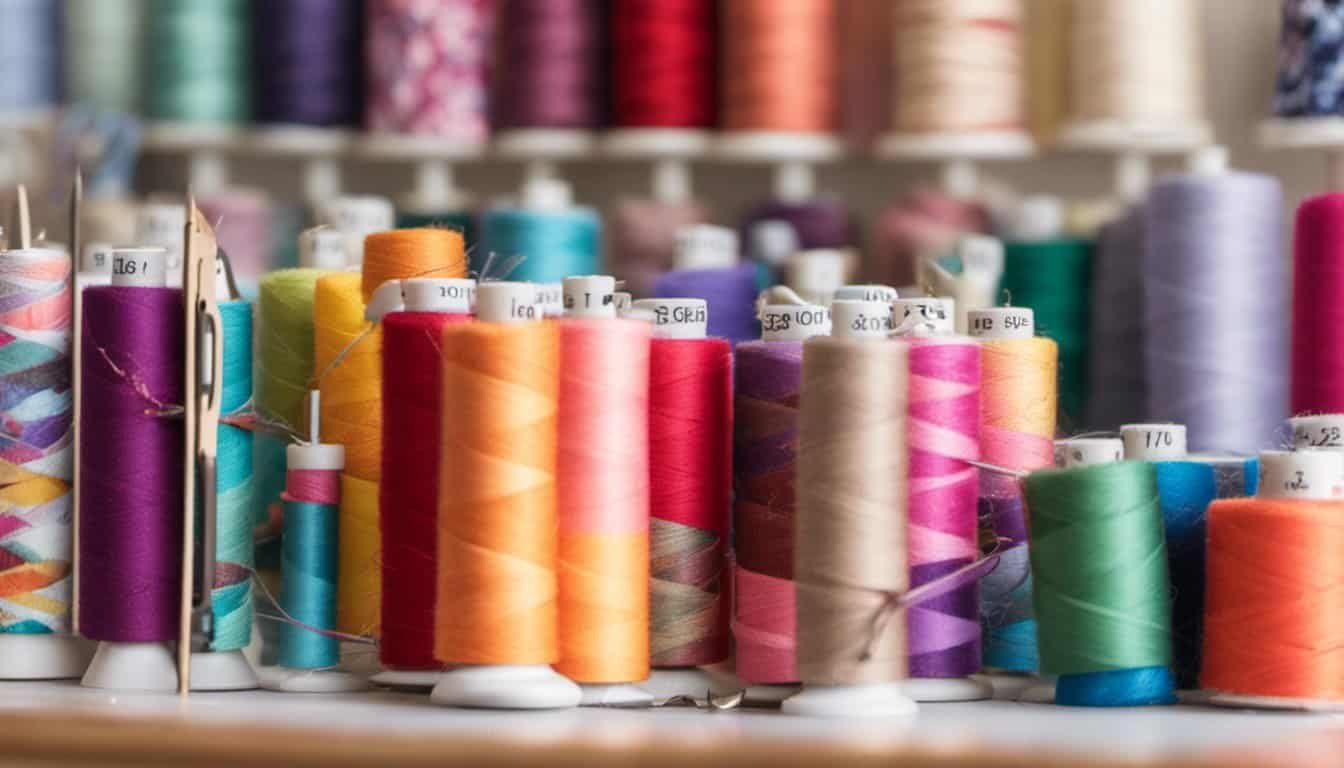
- Misaligned needle and bobbin case: If the needle and bobbin case are not aligned properly, the needle may hit the bobbin case.
- Timing issues: If the timing of the needle and bobbin case is off, the needle may hit the bobbin case.
- Bent or damaged needle: A bent or damaged needle can cause the needle to hit the bobbin case.
- Tension issues: If the tension on the thread is too loose or too tight, it can cause the needle to hit the bobbin case.
- Pressure adjustment: If the pressure adjustment on the sewing machine is too high, it can cause the needle to hit the bobbin case.
- Bobbin timing issues: If the bobbin timing is off, it can cause the needle to hit the bobbin case.
To fix these issues, you may need to adjust the alignment, timing, tension, or pressure on your sewing machine. You may also need to replace a bent or damaged needle or adjust the bobbin timing. If you are unsure how to make these adjustments, consult your sewing machine manual or seek assistance from a professional.
In addition, it’s important to regularly clean and maintain your sewing machine to prevent scratches, nicks, and stuck threads, which can also cause needle and bobbin case issues.
Troubleshooting the Issue
Dealing with a sewing machine needle hitting the bobbin case can be frustrating. However, there are some troubleshooting steps you can take to fix the issue. Here are some tips that can help:
Hand Testing the Needle and Bobbin
The first step in troubleshooting the issue is to check the needle and bobbin by hand. Turn off the machine and remove the needle plate cover. Then, raise the needle to its highest position and turn the handwheel slowly to see if the needle hits the bobbin case. If the needle hits the bobbin case, it may be bent or damaged. Replace the needle with a new one and check if the problem persists.
« Best Acrylic Sewing Machine Extension Tables: Improve Your Sewing Experience
Lil Sew and Sew Review: The Ultimate Guide to This Compact Sewing Machine »
Next, remove the bobbin case and check if there are any burrs or rough spots on it. Use a fine-grit sandpaper to smooth out any rough spots. If the bobbin case is damaged, replace it with a new one.
Adjusting the Needle and Bobbin Timing
If the needle and bobbin are not the issue, then it may be a timing problem. Check the user manual or service manual for your machine to see how to adjust the timing. Make sure to follow the instructions carefully, as adjusting the timing incorrectly can cause more damage to the machine.
Cleaning and Maintenance Tips
Regular cleaning and maintenance can help prevent the needle from hitting the bobbin case. Here are some tips:
- Clean the machine after every use. Use a soft brush to remove any lint or debris from the bobbin case, feed dogs, and other parts of the machine.
- Replace the needle and bobbin regularly. Using a dull needle or a bobbin that is not wound correctly can cause the needle to hit the bobbin case.
- Use high-quality thread. Cheap thread can break easily and cause the needle to hit the bobbin case.
- Oil the machine regularly. Follow the instructions in the user manual for your machine to see how often to oil it and where to apply the oil.
By following these troubleshooting steps and maintenance tips, you can prevent and fix the issue of a sewing machine needle hitting the bobbin case.
Repair and Replacement
If your sewing machine needle hits the bobbin case, it may be necessary to replace either the needle or the bobbin case. Here are some steps to take when replacing these parts.
Replacing the Needle or Bobbin Case
To replace the needle, you will need to follow these steps:
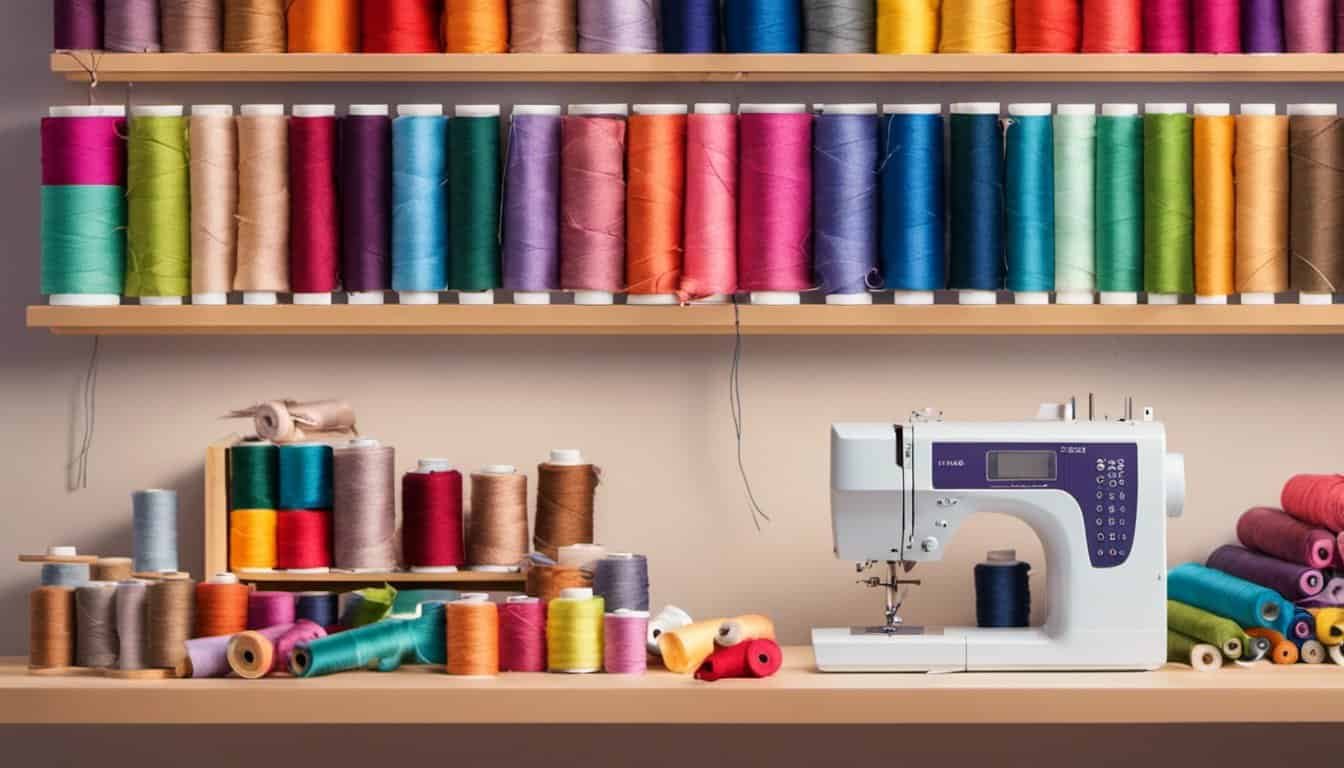
- Turn off the sewing machine and unplug it.
- Remove the needle plate by using a screwdriver to unscrew the screws holding it in place.
- Remove the broken needle by pulling it down and out of the needle clamp.
- Insert the new needle into the needle clamp, with the flat side facing the back of the machine.
- Tighten the needle clamp screw securely.
- Replace the needle plate and tighten the screws.
To replace the bobbin case, you will need to follow these steps:
- Turn off the sewing machine and unplug it.
- Remove the needle plate by using a screwdriver to unscrew the screws holding it in place.
- Remove the bobbin case by pulling it out of the machine.
- Insert the new bobbin case, making sure it is aligned correctly with the marks on the machine.
- Replace the needle plate and tighten the screws.
When to Consult a Skilled Technician
If you are unsure about replacing the needle or bobbin case on your own, or if you have followed the steps above and the problem persists, it may be time to consult a skilled technician. They can diagnose the issue and perform any necessary repairs or replacements.
It is also important to note that some sewing machines may require specific tools or knowledge to replace parts, so consulting the service manual may be necessary.
Preventive Measures
As someone who has experienced the frustration of a sewing machine needle hitting the bobbin case, I know how important it is to take preventive measures to avoid this issue. Here are some tips to help you prevent your sewing machine needle from hitting the bobbin case.
Proper Bobbin Case Placement
One of the most common reasons why a sewing machine needle hits the bobbin case is because the bobbin case is not properly inserted. Make sure that you are inserting the bobbin case correctly. If you have a drop-in bobbin system, make sure that the bobbin case is inserted in the correct orientation. Check your user manual for instructions on how to insert the bobbin case properly.
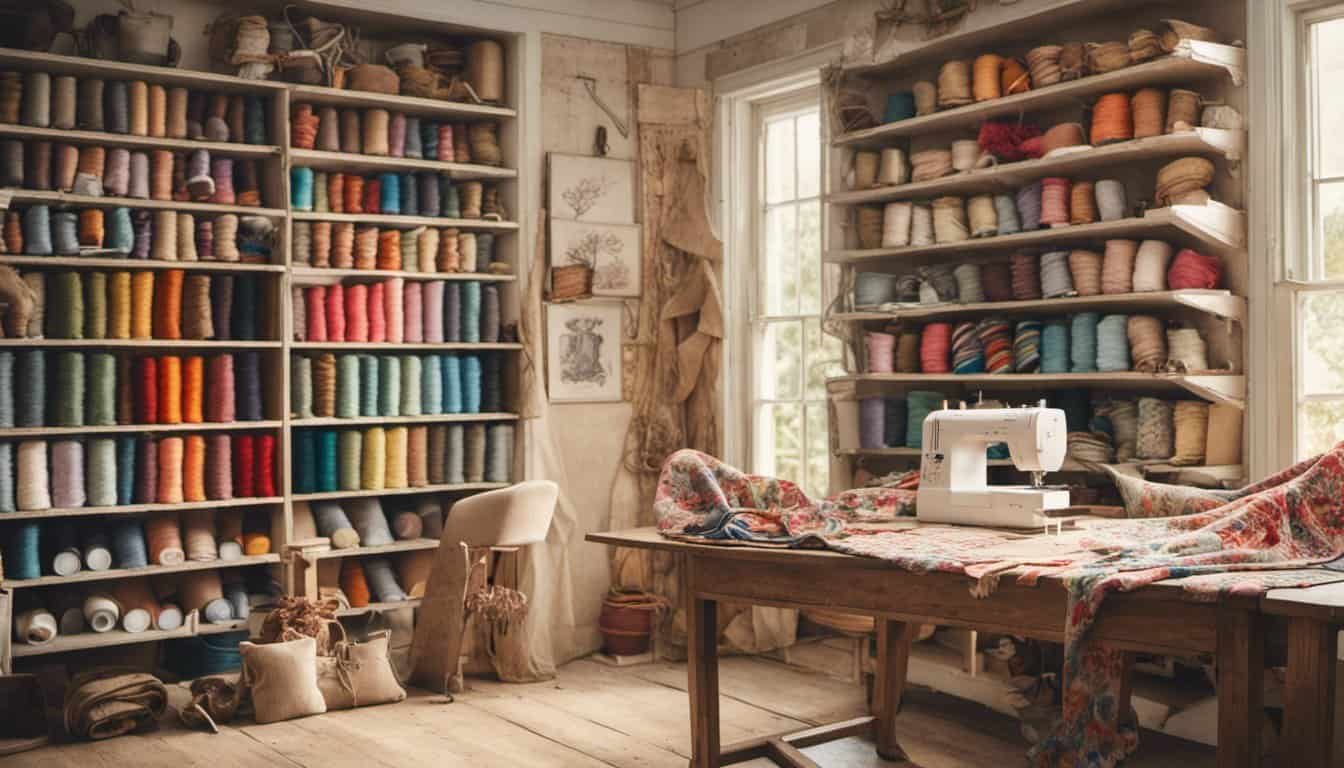
Choosing the Right Needle for Your Project
Choosing the right needle for your sewing project is crucial. Using the wrong needle can cause the needle to hit the bobbin case. Make sure that you are using the correct needle for the fabric you are sewing. For example, if you are sewing denim, you should use a denim needle. If you are sewing a lightweight fabric, you should use a lightweight needle. Check your user manual for information on which needles are best for different fabrics.
Maintaining Sewing Machine Tension
Proper tension is important for preventing your sewing machine needle from hitting the bobbin case. Make sure that your machine’s tension is set correctly for the fabric you are sewing. If the tension is too tight, the needle can hit the bobbin case. If the tension is too loose, the stitches may be uneven. Check your user manual for instructions on how to adjust the tension on your sewing machine.
By following these preventive measures, you can avoid the frustration of a sewing machine needle hitting the bobbin case. Remember to also maintain your sewing machine regularly to ensure it is in good working order. If you need further help with your sewing machine, there are many tutorials and tips available online to help you troubleshoot any issues.
Conclusion
After encountering the frustrating issue of sewing machine needle hitting the bobbin case, I have learned that it is important to take proper care of your sewing machine to prevent this from happening. Regular maintenance can help keep your machine in good working order and prevent issues like this from occurring.
One of the most important things to keep in mind is to always use the correct needle for the type of fabric you are working with. Using the wrong needle can cause it to hit the bobbin case and cause damage to your machine. It is also important to make sure that the needle is inserted properly, with the flat side facing the back of the machine.
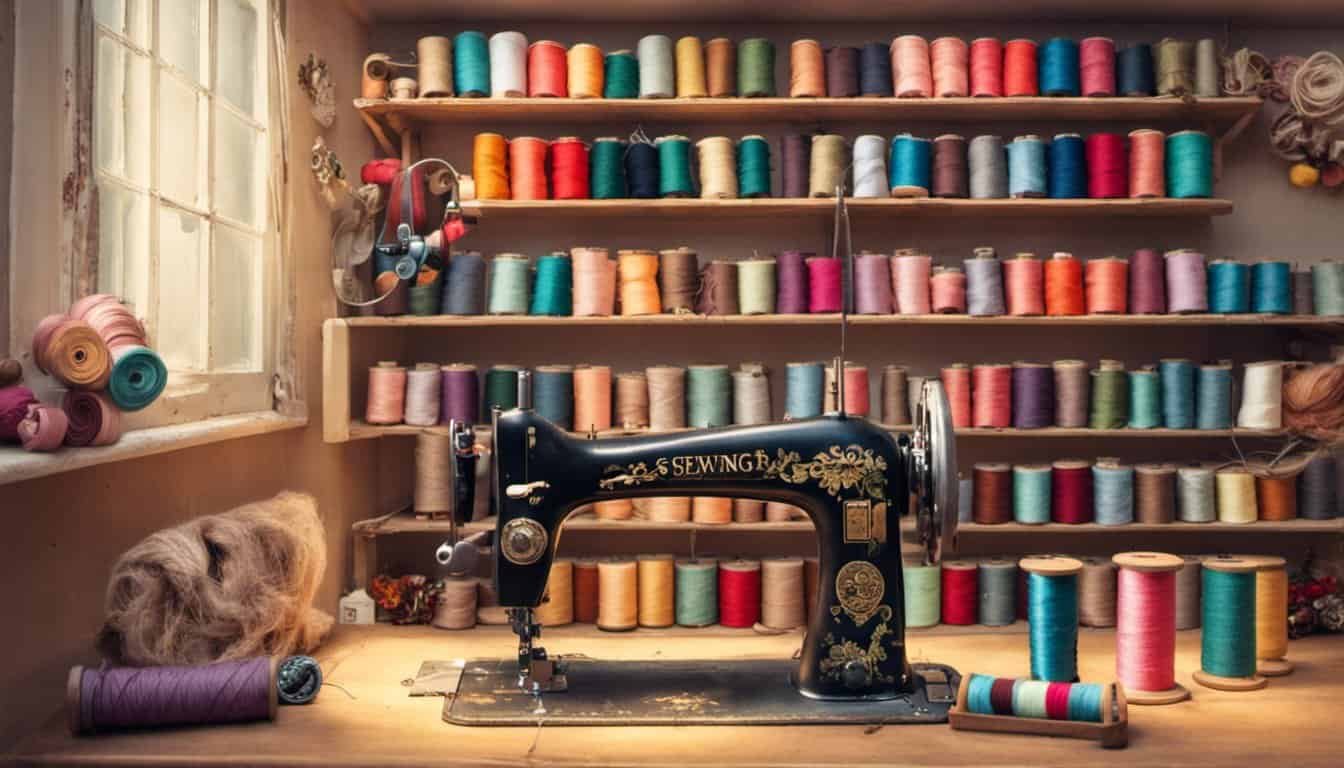
Another important factor is to make sure that the bobbin case is properly inserted and in good condition. A damaged bobbin case can cause the needle to hit it, leading to further damage to your machine. It is also important to make sure that the thread is properly threaded through the machine, as a poorly threaded machine can cause issues like this.
Regular maintenance can also help prevent issues like this from occurring. Cleaning your machine regularly can help prevent dust and debris from building up and causing issues with the moving parts of your machine. It is also important to oil your machine regularly, as this can help keep the moving parts lubricated and prevent issues like this from occurring.
Overall, taking proper care of your sewing machine and being mindful of the factors that can cause the needle to hit the bobbin case can help prevent this frustrating issue from occurring. By following these tips and taking care of your machine, you can ensure that it will continue to work properly and provide you with years of use.
Frequently Asked Questions
How can I fix my sewing machine when the needle hits the bobbin case?
If your sewing machine needle hits the bobbin case, there are several things you can do to fix it. First, try replacing the needle with a new one that is the correct size and type for your machine. You may also need to adjust the tension or position of the needle, or clean and oil the machine. If the problem persists, you may need to take your machine to a professional for repair.
What should I do when my sewing machine needle hits the plate?
If your sewing machine needle hits the plate, it may be because the needle is bent or damaged. Try replacing the needle with a new one that is the correct size and type for your machine. You may also need to adjust the tension or position of the needle, or clean and oil the machine. If the problem persists, you may need to take your machine to a professional for repair.

How do I adjust the needle bar on my sewing machine?
To adjust the needle bar on your sewing machine, you will need to consult your machine’s manual. The process will vary depending on the make and model of your machine. In general, you will need to loosen the set screw that holds the needle bar in place, adjust the height of the needle bar, and then tighten the set screw again. Be sure to follow the instructions in your manual carefully, and if you are unsure about any step, consult a professional.
Why does my needle keep hitting the foot of my sewing machine?
If your needle keeps hitting the foot of your sewing machine, it may be because the needle is not inserted correctly, or because the foot is not the correct height for the needle. Try adjusting the position of the needle or the height of the foot to see if this helps. You may also need to replace the needle with a new one that is the correct size and type for your machine.
Why is my bobbin case moving in my sewing machine?
If your bobbin case is moving in your sewing machine, it may be because the case is not inserted correctly, or because the machine is not threaded correctly. Try reinserting the bobbin case and rethreading the machine to see if this helps. You may also need to clean and oil the machine to ensure that it is running smoothly.
What should I do if my needle is not picking up the bottom bobbin thread on my sewing machine?
If your needle is not picking up the bottom bobbin thread on your sewing machine, it may be because the machine is not threaded correctly, or because the needle is not inserted correctly. Try rethreading the machine and adjusting the position of the needle to see if this helps. You may also need to replace the needle with a new one that is the correct size and type for your machine.

